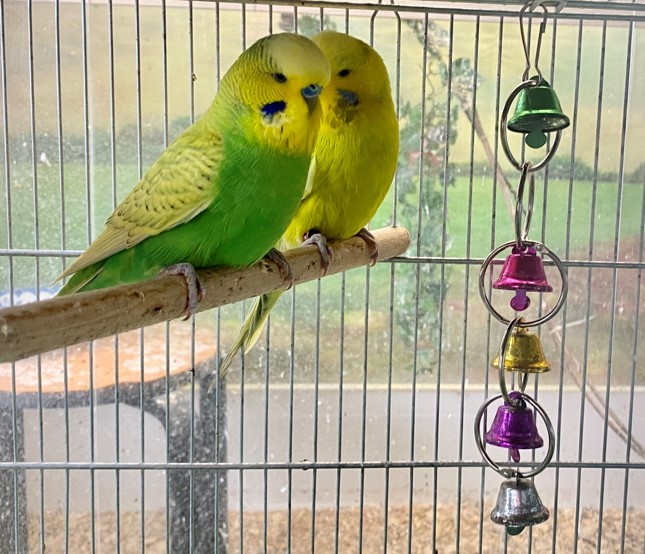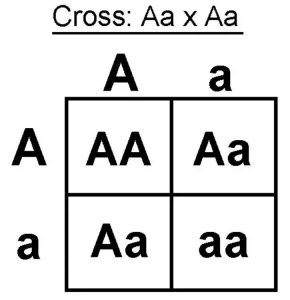
English Budgie Genetics for Breeders & Owners
Basic English Budgie Genetics:
Firstly, lets cover the little things you will need to understand about English budgie genetics. Things like what a chromosome is and how they relate to genes of budgie.
English Budgie Genetic Symbols:
Before we go further with how all the English budgie colours and varieties are inherited, lets discuss some of the terms and symbols used. These will be helpful when you want to get out a pen and paper to work out what colour and variety your English budgie is, or what its babies could be. Also, you will understand what I am talking about in the rest of the articles! So, click here to read about genetic symbols.
Here you will find several articles on English budgie genetics. They will cover the basics of genetics, then go on to learn how budgie traits, like body colours and varieties, are passed from parents to chicks.
Once you have that information you will be able to pair your birds to produce specific colours, or just understand why your favourite budgie looks the way it does.

Dolor Amet
Sed ut perspiciatis unde omnis iste natus error sit voluptatem.
Punnett Squares:

On the right is a punnett square, a tool to help work out the possible results of a mating. Lets have a quick look at one so we can use them when we cover the types of inheritance in a minute.
Let us use the example of a mating between a English budgie with the geneotype AA and one with Aa (we won’t worry about what they represent at the moment). Each English budgie chick from this mating will receive one gene from each parent. So we enter one parents genes into the top boxes, and the others into the boxes on the left hand side. Then copy the top ones down and the left hand ones across to the right, which gives four genotypes.

So in this case mating a bird with AA with a bird with Aa produces two possible genotypes: AA and Aa. Later we will look at more complicated examples giving several different genotypes from a single mating.
Once we cover the part of English budgie genetics where we discover which genes produce which colours, you can use a punnett square to work out the results of matings.
Types of Inheritance in English Budgie:
Now that we know a little bit about genes, lets look at how we can use genetic symbols and punnett squares to work out what genes your budgie has. Remembering that your English budgie has two copies of each gene (one from each parent) I thought we would start with the example from the Basic Genetics page; the budgie that has received one gene for green body color and one gene for blue. What colour will it be? And the answer is- green! This is because blue is a recessive gene but what does that actually mean?
Dominant and Recessive Genes in English Budgies:
Mutated genes are categorised by how they interact with the original (wild type) gene. If a budgie carries both the wild type (eg. green) and the mutated (eg. blue) gene but the bird is green then the mutated blue gene is said to be recessive to the wild type. If the budgie looks like the mutated gene then it is said to be dominant to the wild type.
The link below will take you to more information on this and on some dominant and recessive varieties. Grasping this concept will be the foundation of your understanding budgie genetics.
https://www.budgie-info.com/dominant-genes.html
Click here for information on dominant genes and recessive genes
Incomplete Dominance:
In the usual dominant v’s recessive gene interactions you have three possible genotypes but only two possible phenotypes. As an example:
AA – homozygous wild type, appears wild type
Aa – heterozygous, also appears wild type
aa – homozygous mutated gene, appears like the mutation
There is another type of dominance though, incomplete dominance. With this type of inheritance you get three genotypes with three phenotypes:
AA – homozygous wild type, appears wild type
Aa – heterozygous, appears in-between the two homozygous types
aa – homozygous mutated gene, appears like the mutation
There are a few examples of this in budgie genetics. If you want to know which varieties work like this, then click here and read on…
Multiple Alleles:
So far we have looked at situations where a gene has mutated once giving two possible alleles of that gene; the wild type and the altered version. But what happens if the same gene mutates more than once, creating three or more alleles?
This is exactly what has happened with a couple of budgie varieties. There is a gene which produces full strength body color and markings represented by the symbol ‘Dil’. It mutated to create a budgie with greatly diluted body color and markings, the variety called dilute – ‘dil’. The gene mutated another time and produced a bird with the body color and markings diluted by about 50%, the greywing – ‘dilgw’.
So here we have a single gene with three alleles, normal wild type, greywing, and dilute. This makes things a little different with the inheritance pattern. Let us look a bit more at this type of inheritance.
Gene Linkage in English Budgie Genetics:
Each chromosome contains many genes, so when a particular chromosome is passed on to a chick all the genes on that chromosome are passed on together. They are linked by the fact that they are on the same chromosome and therefore usually stay together.
This leads to some interesting differences in the inheritance of linked genes. I have tried to explain this on this page.
Sex Chromosomes in English Budgies:
There are two main types of chromosomes. The majority are called autosomal chromosomes, but there is also one pair that are different called the sex chromosomes.
The sex chromosomes determine whether your bird is a cock or a hen. In mammals these are called the X and Y chromosomes, and in birds they are called the Z and W chromosomes. However, in budgie circles it is usual to refer to them as X and Y, so I will continue to do so.
Each bird has a pair of sex chromosomes:
-XX = male bird
-XY = female bird
Please note that this is the opposite of mammals.
The male budgie can only pass on an X, but the hen can pass on either an X or a Y, so she in effect determines the gender of the chicks. The Y chromosome is small and is quite different to the X chromosome. This means that a hen (XY) only has one copy of the genes (on its X chromosome), the Y chromosome not carrying any known genes for colour and variety.
This changes the way the genes on the X chromosome are expressed, to look at that a bit more click here.
These are all the articles on budgie genetics you should need to understand most of how budgie varieties and colours are passed on. There are new and interesting things being discovered about the many varieties that will change how we view things as they become understood. I will update the information as I learn more.

0 Comments
Trackbacks/Pingbacks